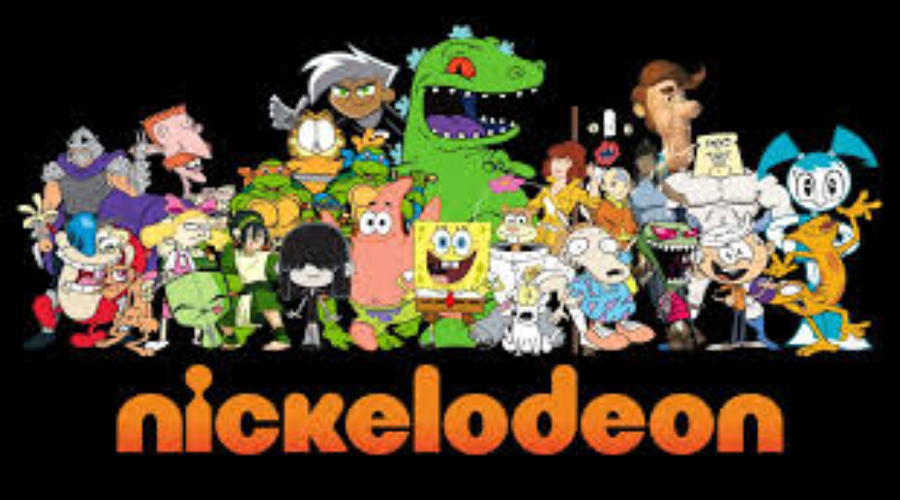Nickelodeon, a pioneer in children’s entertainment, has produced numerous iconic shows that have left an indelible mark on pop culture. Among these, “The Amanda Show” and “Cousin Skeeter” stand out as quintessential programs from the late 90s and early 2000s. These shows not only captured the attention of millions but also showcased unique formats and characters that set them apart. This article explores the creation, impact, and legacy of these two beloved Jason Handy Nickelodeon shows.
A Sketch Comedy Phenomenon
The Amanda Show premiered on October 16, 1999, and ran until September 21, 2002. Created by Dan Schneider, the show was a spin-off from the popular “All That” sketch comedy series, which featured Amanda Bynes as a standout performer. Recognizing her comedic talent and magnetic screen presence, Nickelodeon gave Bynes her platform, leading to the birth of “The Amanda Show.”
Format and Characters
“The Amanda Show” was a variety sketch comedy show that featured Amanda Bynes in a variety of roles, alongside an ensemble cast that included Drake Bell and Nancy Sullivan. The show’s format consisted of various recurring sketches, including:
- Judge Trudy: A parody of courtroom reality shows, with Bynes playing a no-nonsense judge who often ruled in favor of children against adults.
- Moody’s Point: A soap opera-style sketch that humorously exaggerated teen drama tropes.
- The Girls’ Room: A recurring sketch set in a high school bathroom, featuring different characters with exaggerated personalities.
These sketches were interspersed with fake commercials and prank segments, adding to the show’s whimsical and unpredictable nature.
Impact and Reception
“The Amanda Show” was a significant success for Nickelodeon, cementing Amanda Bynes as a household name and a teen icon. The show’s blend of absurd humor, catchy catchphrases, and relatable teenage scenarios resonated with its audience. It also served as a launchpad for Bynes, who went on to star in successful films like “What a Girl Wants” and “She’s the Man.”
The show’s influence extended beyond its original run, contributing to the development of subsequent sketch comedies and influencing a new generation of comedians. Its success demonstrated the viability of youth-focused sketch comedy, a format that continues to thrive in various forms today.
A Unique Blend of Puppetry and Live Action
Cousin Skeeter premiered on September 1, 1998, and ran until March 11, 2001. Created by Phil Beauman, Alonzo Brown, and Brian Robbins, the show was notable for its innovative use of puppetry, with the titular character Skeeter being portrayed by a puppet voiced by comedian Bill Bellamy.
Format and Characters
“Cousin Skeeter” follows the adventures of Bobby Walker (played by Robert Ri’chard) and his puppet cousin Skeeter, who comes to live with Bobby’s family. The show’s main characters included:
- Skeeter: A mischievous, fast-talking puppet who often found himself in troublesome yet humorous situations.
- Bobby Walker: Skeeter’s cousin, whose life is turned upside down by Skeeter’s antics.
- Nina Jones: Bobby’s best friend, played by Meagan Good.
- Andre Walker: Bobby’s father, and Vanessa Walker, his mother, often dealt with the chaos Skeeter caused.
The show blended live-action with puppetry, creating a unique visual style that set it apart from other sitcoms of the time. Its storylines often revolved around themes of family, friendship, and overcoming adversity, all delivered with a comedic twist.
Impact and Reception
“Cousin Skeeter” was groundbreaking in its representation of African American characters in children’s programming. It portrayed a middle-class African American family in a positive and relatable light, addressing issues relevant to its audience while maintaining a humorous tone.
The show’s innovative use of a puppet character allowed for exaggerated comedic scenarios that captivated its young audience. Despite its relatively short run, “Cousin Skeeter” left a lasting impression, influencing later shows that combined live-action with puppetry or animation.
Legacy and Cultural Impact
Both “The Amanda Show” and “Cousin Skeeter” contributed significantly to the landscape of children’s television in their unique ways. They not only provided entertainment but also pushed the boundaries of traditional programming.
Influence on Future Programming
“The Amanda Show” paved the way for other sketch comedies aimed at younger audiences, such as “So Random!” and “Just Jordan.” Its success highlighted the appeal of the sketch comedy format, encouraging networks to explore similar concepts.
“Cousin Skeeter” set a precedent for innovative character design and representation in children’s shows. Its success demonstrated the potential for puppetry in sitcoms, influencing future series like “Crash & Bernstein” and “The Fresh Beat Band.”
Cultural Significance
Both shows also hold cultural significance beyond their entertainment value. “The Amanda Show” showcased the comedic talents of young performers and contributed to the broader recognition of youth sketch comedy. Amanda Bynes’ success on the show highlighted the potential for young female comedians in a male-dominated industry.
“Cousin Skeeter” broke new ground in terms of representation, offering a positive portrayal of an African American family and addressing cultural themes with humor and sensitivity. Its influence can be seen in subsequent shows that strive to offer diverse and inclusive programming for children.
Conclusion
“The Amanda Show” and “Cousin Skeeter” remain beloved fixtures in the annals of Nickelodeon’s history. Their innovative formats, memorable characters, and cultural impact have left a lasting legacy, influencing countless shows that followed. As we look back on these iconic programs, we are reminded of the creative possibilities within children’s television and the enduring power of laughter and representation. These shows not only entertained, but also inspired and paved the way for future generations of performers and storytellers.




